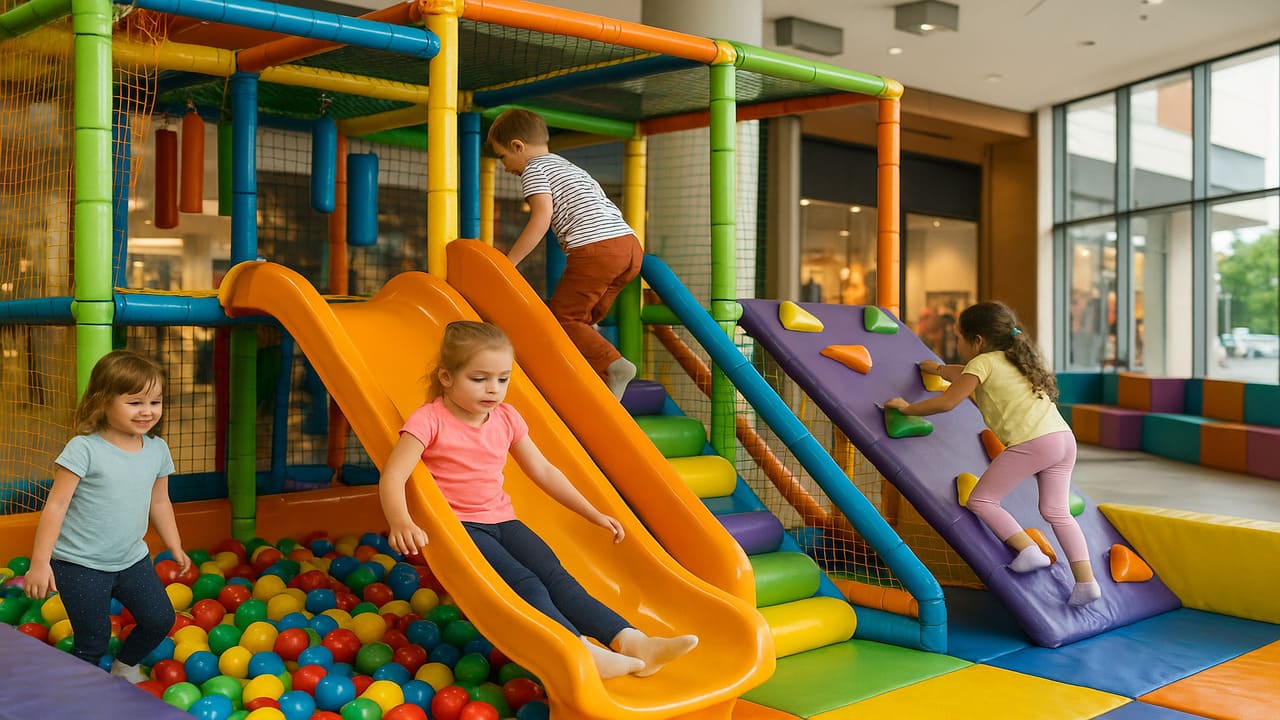
The Berkshire Mall – As shopping malls continue to reinvent themselves in the digital age, one concept has proven to be both family-friendly and financially rewarding: indoor playgrounds. These bright, colorful, and engaging spaces have become much more than just a place for kids to burn off energy. For entrepreneurs and mall operators, they offer a powerful business opportunity that taps into the growing demand for experiential, child-centered environments.
Indoor playgrounds in malls succeed because they serve multiple purposes at once. For parents, they provide a safe and supervised environment where children can play while adults shop, dine, or attend to errands. For malls, they increase foot traffic and encourage longer visits. And for kids well, it’s all about fun.
In today’s fast-paced world, families are seeking destinations that offer convenience and entertainment in one place. An indoor playground answers that call. Whether it’s a soft-play zone for toddlers or an adventure-themed climbing area for older kids, these playgrounds become natural gathering points.
Moreover, with the rising concern around screen time and sedentary lifestyles among children, active play has gained new urgency. Indoor playgrounds promote physical activity, socialization, and creativity all while being shielded from unpredictable weather or outdoor hazards.
Also Read : How Event Organizers Drive Engagement in Modern Malls
The primary target audience for indoor mall playgrounds includes:
An effective business model leverages all of these demographics. For instance, weekday foot traffic might be lower, but partnerships with schools or weekday discounts for parents with toddlers can fill that gap. On weekends, birthday packages and themed events can drive substantial revenue.
It’s also worth noting that mall-based playgrounds benefit from natural foot traffic. Shoppers who didn’t initially plan to visit the play area often become spontaneous customers especially when children catch sight of the colorful play equipment.
Successful indoor playground businesses diversify their income sources. Some of the most effective include:
By combining multiple revenue streams, playground owners can maximize profitability while offering enhanced customer value.
Also Read : DIY Board Games for Endless Family Fun
Like any business, launching a playground inside a mall requires planning and market understanding. Here are a few things to consider:
As consumer behavior evolves, indoor playgrounds can stay competitive by incorporating educational and tech-driven elements. For example:
Additionally, sustainability can become a selling point. Eco-friendly materials, non-toxic paint, and recyclable decorations can appeal to environmentally conscious parents.
Rather than seeing the playground as just a business, many successful operators position it as a community hub. Hosting free parenting seminars, organizing donation drives, or supporting local schools through giveaways can boost brand loyalty and goodwill.
When children build joyful memories in a play space, parents naturally return and often bring others. Over time, the playground becomes part of a family’s lifestyle, not just a service.
If you’re ready to invest in a business that brings smiles, supports healthy childhood development, and aligns with modern mall trends an indoor playground might be your perfect venture.